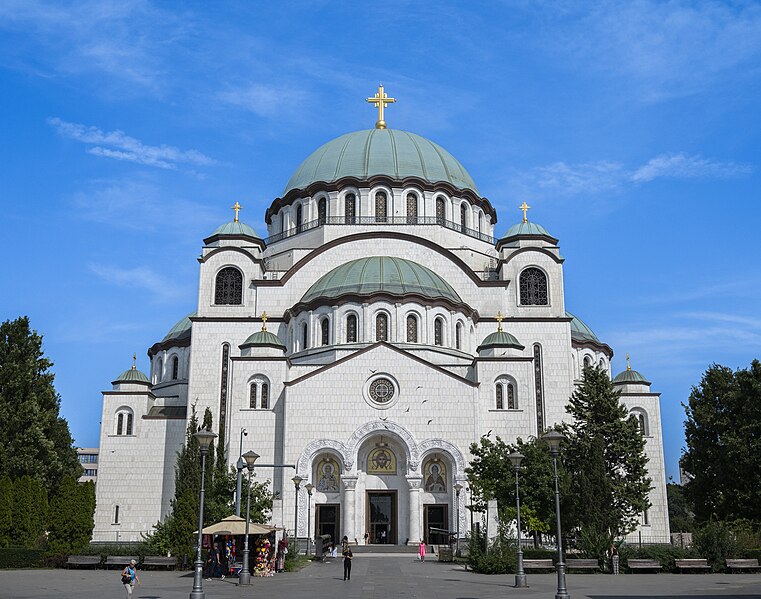The Church of Saint Sava, located in Belgrade, Serbia, is one of the most significant landmarks in the city and a symbol of Serbian Orthodox Christianity. Named after Saint Sava, the founder of the Serbian Orthodox Church and the patron saint of Serbia, this monumental church is not only an architectural masterpiece but also a spiritual and cultural icon deeply revered by the Serbian people.
Construction of the Church of Saint Sava began in 1935, but due to various historical and political factors, including World War II and the subsequent communist rule in Yugoslavia, the church was not completed until much later. Even today, the church remains partially unfinished, with ongoing construction work focused on its interior decoration and final touches.
Despite its incomplete state, the Church of Saint Sava is a magnificent structure that dominates the skyline of Belgrade. Its imposing size and striking design draw the attention of visitors from near and far, while its prominent position atop Vračar Hill, one of the highest points in the city, makes it a visible and iconic symbol of Belgrade.
The architectural style of the Church of Saint Sava is Byzantine-inspired, with elements of Serbian medieval architecture blended with neoclassical and modernist influences. The church’s exterior is characterized by its grand dome, towering bell towers, and intricate detailing, including ornate carvings, mosaics, and marble reliefs depicting scenes from Serbian history and Orthodox Christian tradition.
The interior of the Church of Saint Sava is equally impressive, with its vast nave, soaring arches, and richly decorated iconostasis. The church is adorned with stunning frescoes, intricate iconography, and exquisite marble work, creating a sense of awe and reverence for visitors who enter its sacred space.
One of the most significant features of the Church of Saint Sava is its crypt, which houses the relics of Saint Sava himself. Believed to be the remains of the revered saint, the relics are enshrined in a magnificent sarcophagus and are venerated by Orthodox faithful who come to pay their respects and seek blessings.
Beyond its religious significance, the Church of Saint Sava holds a special place in the hearts of the Serbian people as a symbol of national identity, resilience, and unity. Throughout history, the church has been a rallying point for Serbs during times of hardship and adversity, serving as a beacon of hope and inspiration for generations.
Today, the Church of Saint Sava continues to be an active place of worship, pilgrimage, and cultural heritage, attracting thousands of visitors each year who come to admire its beauty, learn about its history, and experience the spiritual significance of this sacred site.
In conclusion, the Church of Saint Sava stands as a testament to the enduring faith, cultural heritage, and national identity of the Serbian people. With its majestic architecture, rich history, and spiritual significance, it remains a beloved landmark and cultural icon that embodies the soul of Belgrade and the spirit of Serbia.

